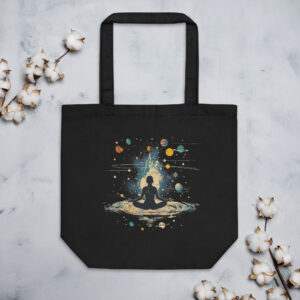If you’ve been in the middle of a meditative experience only to find your mind wandering, you know how difficult it can be to stick to the task. With so many different kinds of meditation techniques out there, it can be hard to know what works best for you. But finding just the right practice doesn’t have to be overwhelming. In fact, with a bit of exploration, you might discover the perfect fit! Here are a few tips on how to find the right meditation techniques for you.
The first step to finding the right meditation is understanding the different types available. Silence and reflection, chanting or mantras, visualization… the choices can seem endless. Before diving in, consider what type of experience you’re looking for. Do you want to get in touch with your spiritual side or find a bit of calm and relaxation?
Once you’ve narrowed the choices, it’s time to try a few different techniques. Start with the one that speaks to you the most. Turn off your phone, find a quiet spot, and try it. See how it makes you feel. Do you feel relaxed and energized or more anxious and distracted?
From there, keep experimenting. Don’t be afraid to skip one technique and move on to the next. Everyone’s path to finding the right meditation practice is different. The goal is to find the one that resonates with you, so don’t be afraid to explore until you find it. With a little effort and patience, you might surprise yourself with your newfound skills and peace of mind!
-

Celestial Soul Eco-Friendly Tote Bag
$18.50 Select options This product has multiple variants. The options may be chosen on the product page -

Celestial Soul Women’s T-Shirt
Price range: $20.00 through $21.50 Select options This product has multiple variants. The options may be chosen on the product page
1. What Are the Benefits of Meditation?

Meditation is hot right now. Like seriously, HOT. From Instagram influencers to your high school teachers, everyone’s talking about the magical benefits of meditation. So, what are they exactly? Well, you’ve come to the right place to find out!
First off, meditation can improve your mental health. Studies have found that it reduces stress and negative emotions while increasing feelings of relaxation and self-esteem. By taking time to switch off from the always-on world, you can give your brain the rest and recuperation it needs to stay healthy and balanced.
What’s more, it may also improve your physical health. Studies have suggested that meditation can positively affect physiological symptoms of stress, such as high blood pressure, heart rate, and breathing rate. It might even help you become more active, with some studies suggesting that regular meditation can make your workouts more effective!
Bonus points: meditation can help your cognitive functioning. It can help boost focus and attention, increase creativity, and boost memory! It can even help you think more clearly and logically, making decisions easier. Meditation is like nature-made espresso for your brain!
If all of that hasn’t convinced you of the amazing benefits of meditation, then how about this – it can also help you feel more connected to yourself and the world. Meditation helps to quieten the noise of everyday life so that you can tap into the things that truly matter to you and gain a deeper understanding of yourself and your life.
So there you have it – meditation can give you more energy, help you think clearer, and help bring inner peace and harmony into your life. Who knew?! Now, all you have to do is figure out what meditation techniques work best for you – but don’t worry, we’ve got a guide for that too.
2. How to Choose a Meditation Technique

Are you looking to get the most out of your meditation practice? There are so many different types of meditation techniques out there. How do you pick the right one for you? It can feel like trying to pick a new outfit—you have to figure out which style will work for you.
The best way to choose a meditation technique is to think about what kind of goals you have. Consider any anxiety, stress, or emotional triggers and how these can be addressed with certain techniques. For example, mindfulness meditation might be a great fit to improve your focus. Mindfulness meditation focuses on your awareness of the present moment, helping you to stay in the here and now.
Try loving-kindness meditation to increase your self-awareness and work through difficult emotions. This teaches you to become aware of your feelings and compassionately direct kindness and forgiveness towards yourself.
If breathing techniques are your thing, any mindful or Hindu-based meditation could be great. These techniques align breath and physical body postures to cultivate inner peace and harmony.
Different forms of Qi Gong and Tai Chi can be a great fit if you’re looking for an energetic approach to meditation. These martial art forms use movement and inner chi (energy) to eliminate blockages in the body and mind.
No matter your meditation technique, ensure it will work for you. Maybe you’re looking to use meditation to start your day or calm down after a stressful day. Having daily practice can help strengthen your commitment and discipline.
Experiment, find out what works best for you, and don’t be afraid to mix things up. Ultimately, it’s important to always stay in tune with your needs and practice in a supportive and comfortable way.
3. Understanding Different Meditation Types

You’ve likely heard a lot about meditation and its benefits, but the various types and techniques available can be overwhelming. Don’t worry; that’s why understanding the different meditation types is an important part of finding one that works for you.
Let’s start with mindfulness meditation. This type of meditation involves keeping your attention focused on the present moment. It’s like turning up the volume on awareness of your thoughts and feelings — without being judgmental. A good trick is to start paying attention to your breath. Focusing on your breath isn’t the only mindfulness technique — there’s also body scanning, mantras, and loving-kindness training. However, in general, the idea is to pay attention to the present moment and stay focused.
Moving on to transcendental meditation, you’ll come across the concept of a mantra. It’s a phrase or short statement repeated aloud or internally (silently). A mantra shifts the mind from analytical thinking to a more relaxed state. Transcendental meditation is more of an effortless technique. The goal is to access deeper layers of awareness without effort, beyond repeating a mantra. It can be done with eyes open or closed and often requires a teacher to guide you.
Then there’s moving meditation, which — no surprise here — involves physical movement. This type of meditation generally relies on a slow, focused activity like walking, yoga, or tai chi. Moving meditation helps you focus on the movement, the sensation it creates, and your breath. It helps to bring awareness to your body and your present-moment experience.
Each meditation type has unique benefits, so it’s worth exploring what works best for you. Whether it’s mindfulness, transcendental, or moving meditation, find the type that resonates to make it part of your regular practice.
4. Setting Aside Time for Meditation

Setting aside time is half the battle when it comes to getting into a meditation routine! Sometimes life can feel so crazy and busy that it can be hard to find space in the day to stop, breathe and clear your mind. But even if you only have five minutes, you can take those five minutes to reset, regroup and focus on your well-being.
It’s important to make space for yourself to make room for some blissful relaxation and give your body a well-deserved break. After all, your mental well-being starts with pausing the everyday hustle and bustle to give yourself a break from everything happening around you.
Try setting an alarm in the morning or the evening — you can pick whichever time works better for you. When that alarm goes off, it’s your reminder to take a break from everyday tasks and sit in a comfortable spot. Maybe it’s your bedroom, the couch, or even the park; choose a peaceful and open spot.
Now, this step is really important! Put away all your phones and other devices and sit there in stillness and silence. Once you can find a place without any extra noise or distraction, let yourself slow down and reset. Make it a habit; soon, you won’t need to set an alarm to remind you.
It’s hard to break away from your every day and find that time. Still, if you make the effort to commit, you’ll find that these five minutes are relaxing and calming, but it also helps to ground yourself and bring clarity and focus to your daily life.
5. Finding Ways to Stick to a Meditation Routine

Are you having a hard time sticking to a meditation routine? You’re not alone. It’s easy to get excited about meditation, but an inconsistent approach to our practice can leave us frustrated and discouraged. So, how can you stay motivated and consistent in your meditation practice?
First of all, find an accountability partner. This could be a friend, a family member who is also interested in meditation, or someone who will remind you to meditate. This can help you keep on track and stay motivated to practice.
Another helpful tip is to create a reminder list. Whether on your phone or a piece of paper, taking a few moments to jot down the benefits of meditating or any of your ultimate aims will remind you why you are practicing and inspire you to continue.
Thirdly, add variety to your practice. Switch things up from time to time—try different techniques, set different intentions, and change the duration of the session. Experimenting with different techniques and movement techniques could make meditation far more enjoyable and engaging.
A fourth method is to focus on the journey. Instead of aiming for a certain goal or outcome, focus on enjoying the process of meditating and learning from everything that comes up. When we focus on the journey, we can gain greater satisfaction and heighten our level of motivation.
Finally, be kind to yourself. Self-compassion is key; we were never taught to be consistently perfect in everything we do. It’s ok to miss a day here and there, and it’s ok if your practice isn’t perfect.
Have compassion for yourself, and you will be more likely to stick with it, even if you’re not taking great leaps all the time.
Meditation is not something you can learn overnight. Stick with it and practice regularly, and you will reap the rewards. Start making changes today; soon enough, you’ll be on your way to becoming a bona fide meditator.
6. Factoring in Emotional and Physical Needs

You know what you’re feeling and your body needs—so use that wisdom when actualizing the right meditation techniques! If you’re feeling stressed and your shoulders are knotted up like a pretzel, try an active meditation technique like a gentle yoga practice to get the energy flowing.
On the other hand, if you’re feeling emotionally drained, a passive technique like guided meditation could be the ticket. Snuggle into a cozy chair, listen to the soothing voice, and drift off into mindfulness heaven.
Another option is to mix and match to see what works best for you. You might try breathing exercises to calm down after a round of physical poses to get your whole body involved. Or take a few moments to sense how your body feels directly before and after your meditation session. There’s no one-size-fits-all, so get creative and test different approaches until you find techniques that make your body and soul sing.
And whatever you decide, be kind to yourself. Meditation isn’t an exact science, so give yourself some grace if you stumble and make mistakes. Beek up with your practice on the days when you feel connected, and lighten your grip on the days when you don’t. Consistency isn’t the game here. Enjoy and honor your journey.
You’ve got this!
7. Incorporating Meditation Into Your Daily Life

You are already well on incorporating meditation into your daily life; you just haven’t known where to start. The key is fluctuating your meditation strategies and techniques to find what works best.
For many, the first step is to set up a comfortable room in your home. Choose a spot where you can easily relax and focus – find a chair or floor cushion that you can use, and make the area as tranquil as possible. Where you decide to meditate should also be free of other distractions, such as phones or televisions. If you are outdoors, find a place that is quiet and peaceful.
You can also experiment with the different types of meditation available to you. Mindful meditation is an acclaimed practice that allows you to focus on a specific thought. Visualization meditation lets you form a mental image, focusing on what you want to include in the meditation session. Guided meditation is one of the most popular choices, as it is a narrator who guides your journey into the subconscious.
It’s up to you to decide whether to remain to stand, sit, or lay down for your meditation. Just be sure to go for what feels natural to you. If you experience any body discomfort, try breathing through it — don’t let it be a distraction. One tip to keep in mind when starting is to keep the exercises short: apart from the sheer happiness that comes from meditating, an added benefit is that it takes less effort out of you overall.
Of course, the most important part is to remain consistent. Set a daily schedule, such as in the morning, an hour before bed, or after you complete your work. Following that schedule will motivate you to keep meditating, and you should start seeing results soon. Lastly, don’t feel guilty if the session didn’t go as you wanted: it is all about practice.
Take the time to meditate daily, and you will reap the rewards.
Conclusion
Finding the right meditation techniques can be difficult and intimidating, but with a bit of effort and exploration, it’s possible to find what works best for you. Whether deep breathing and visualization, body scanning, or peaceful walks in nature, everyone’s path to finding the right meditation technique will be unique.
Your practice and perseverance will ultimately bring you the relaxation and calming benefits of meditation that are so beneficial for our lives. So if you haven’t started your journey to finding the right meditation technique yet, the time is now – take a few moments and explore what could work for you.
Who knows, maybe you’ll stumble upon your very own meditation superpower!
References:
Kumar, Neil. “How to Find the Right Meditation Techniques for You.” Mindvalley Blog, Mindvalley, 9 Nov. 2020, blog.mindvalley.com/meditation-techniques/.

